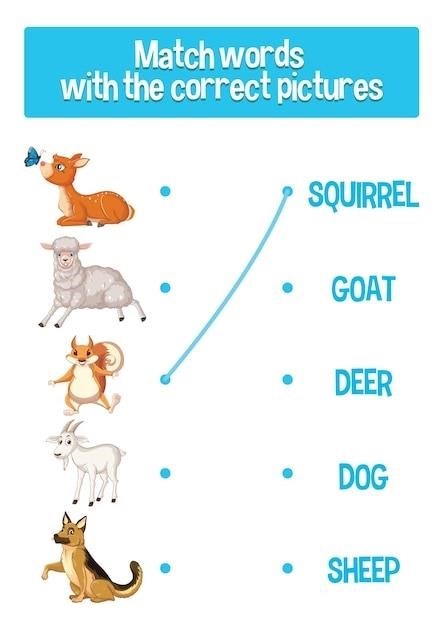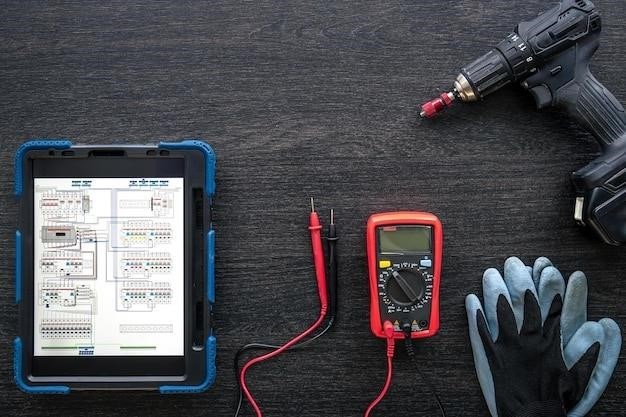ShoreTel IP Phone User Guide
This user guide provides comprehensive information on using ShoreTel IP phones, covering everything from basic call handling to advanced features. It is designed to help you get the most out of your ShoreTel IP phone and navigate its various functionalities with ease.
Overview of the ShoreTel IP Phone
ShoreTel IP phones are designed to provide a seamless and efficient communication experience. They offer a range of features, including crystal-clear audio quality, intuitive user interfaces, and advanced call handling capabilities. ShoreTel IP phones are compatible with ShoreTel’s unified communications solutions, which enable businesses to integrate voice, video, messaging, and conferencing into a single platform. This integration streamlines communication processes, enhances collaboration, and improves overall productivity. The phones are available in various models to suit different needs, from basic single-line phones to advanced multi-line models with integrated features. The ShoreTel IP phone’s sleek design and ergonomic features contribute to a comfortable and user-friendly experience. The phones are typically equipped with a high-resolution LCD display, a user-friendly navigation system, and dedicated buttons for frequently used functions.
ShoreTel IP phones are known for their reliability and robust performance. They are designed to operate seamlessly within a network infrastructure, offering a stable and dependable communication solution. ShoreTel IP phones are typically compatible with a wide range of headsets, allowing users to personalize their communication experience. This flexibility ensures a comfortable and efficient communication setup, whether working at a desk or on the go. The ShoreTel IP phone’s advanced features and functionalities empower users to manage their calls effectively, collaborate seamlessly, and enhance their overall communication experience.
Getting Started
Getting started with your ShoreTel IP phone is a straightforward process. Once you receive your phone, the initial setup involves connecting it to your network and configuring the basic settings. Typically, this involves connecting the phone’s Ethernet cable to your network port and powering it on. Upon powering up, the phone may automatically connect to your network and display the initial setup screen. This screen will guide you through configuring essential settings, such as your extension number and password. If the phone doesn’t automatically connect to your network, consult your system administrator or the user manual for specific instructions on manually connecting the phone to your network. The manual will also provide detailed instructions on configuring various settings, including time zone, date, and language preferences.
Once the basic settings are configured, you can start using your ShoreTel IP phone. The phone’s intuitive interface makes it easy to navigate and access various features. To place a call, simply dial the number using the phone’s keypad or by selecting a contact from your directory. You can also use the speakerphone for hands-free conversations. The phone’s display will show you the status of your calls, including incoming calls, missed calls, and voice messages. You can also access your voicemail by pressing the designated button on the phone. The ShoreTel IP phone’s user guide will provide detailed instructions on how to use each feature, including call forwarding, call transfer, and conference calling. Familiarizing yourself with these features will enable you to make the most of your ShoreTel IP phone and enhance your communication experience.
Making and Receiving Calls
Making and receiving calls on your ShoreTel IP phone is a simple and intuitive process. To place a call, simply lift the handset and dial the desired number using the keypad. Alternatively, you can use the speakerphone for hands-free conversations. If you are calling an external number, you may need to dial a prefix, such as “9” or “0,” before dialing the number. This prefix is typically configured by your system administrator. To end a call, simply hang up the handset or press the “End Call” button on the phone.
Receiving calls on your ShoreTel IP phone is equally straightforward. When you receive a call, the phone will ring, and the caller’s name or number will be displayed on the screen. To answer the call, simply lift the handset or press the “Answer” button. If you want to decline the call, press the “Reject” button. You can also use the “Hold” button to put a call on hold or the “Transfer” button to transfer a call to another extension. The phone’s user guide provides detailed instructions on these features and other call handling options, such as call forwarding and call waiting.
Your ShoreTel IP phone also offers features for managing incoming calls. You can customize your call handling modes to suit your preferences, such as setting your phone to “Do Not Disturb” to avoid interruptions. The user guide explains how to configure these call handling modes and other advanced features, such as call recording and voicemail. Understanding these features will enable you to manage your calls efficiently and enhance your communication experience.
Advanced Features
ShoreTel IP phones are equipped with a range of advanced features designed to enhance your communication experience. These features go beyond basic calling functionality and provide tools for improved productivity, collaboration, and call management. One of the key advanced features is the ability to create and manage conference calls. Your ShoreTel IP phone allows you to initiate conference calls with multiple participants, seamlessly adding or removing participants during the call. This feature is particularly useful for team meetings, presentations, or collaborative discussions involving multiple parties.
Additionally, your ShoreTel IP phone offers call forwarding, enabling you to redirect incoming calls to another extension, voicemail, or even a mobile phone. This feature is useful when you are unavailable or want to ensure you don’t miss any important calls. The phone also supports call waiting, allowing you to hold an ongoing conversation while receiving a new incoming call. You can choose to answer the new call or put it on hold while continuing with the current conversation.
Another valuable feature is call recording, which allows you to record conversations for documentation, training, or legal purposes. This feature can be enabled or disabled based on your needs and compliance requirements. Your ShoreTel IP phone also offers a variety of customization options, allowing you to personalize your phone with specific features, preferences, and settings to suit your workflow and communication style.

Call Handling Modes
ShoreTel IP phones offer a variety of call handling modes to help you manage incoming calls and maintain control over your communication flow. These modes provide flexibility in how you receive and handle calls based on your availability and preferences. One commonly used mode is “Do Not Disturb,” which allows you to block all incoming calls, preventing interruptions while you focus on other tasks. This mode is ideal for situations where you need uninterrupted concentration, such as during meetings or when working on critical projects.

Another useful mode is “Forward All Calls,” which redirects all incoming calls to a designated extension, voicemail, or mobile phone. This mode is helpful when you are away from your desk or need to ensure calls are handled even when you are unavailable. You can also utilize “Forward Busy Calls,” which redirects incoming calls only when your phone is already engaged in a conversation. This option ensures that callers are not left waiting if you are already on a call.
ShoreTel IP phones also offer “Forward No Answer” mode, where calls are automatically forwarded to another extension or voicemail if you don’t answer them within a specified timeframe. This mode is useful for minimizing call delays and ensuring prompt responses to incoming calls, even if you are temporarily unavailable. By understanding and utilizing these call handling modes, you can effectively manage your calls and prioritize your communication flow based on your needs and preferences.
Voicemail
ShoreTel IP phones provide a robust voicemail system that allows you to manage and access voice messages conveniently. When you receive a call, you can choose to send it to voicemail by pressing the designated button on your phone. The system will then record the message left by the caller, allowing you to retrieve and listen to it at your convenience. Your ShoreTel voicemail system offers a range of features to enhance your message management experience. You can access your voicemail by dialing a specific code or using the dedicated voicemail button on your phone.
Once you access your voicemail, you can listen to your messages, delete them, save them for later, or forward them to another extension. You can also set up different voicemail greetings for different situations, such as when you’re unavailable or when you’re on a different line. The system allows you to customize your voicemail greeting to suit your needs and preferences. You can also configure voicemail notifications to alert you when you have new messages, ensuring that you don’t miss important communications.
ShoreTel’s voicemail system is designed to provide you with a secure and reliable way to manage your voice messages, ensuring that you can access and manage them efficiently. You can access your voicemail remotely through a web portal or mobile app, providing you with convenient access to your messages regardless of your location.
Directory and Call History
Your ShoreTel IP phone provides a convenient directory and call history feature, allowing you to quickly access contact information and review past calls. The directory function enables you to search for contacts within your organization’s directory, making it easy to find phone numbers and other relevant information. You can search by name, extension, or other criteria, depending on the configuration of your phone system.
The call history feature keeps a record of your recent calls, including incoming, outgoing, and missed calls. This allows you to easily track your communication history, making it simple to redial numbers or review previous conversations. You can filter the call history by date, time, or other parameters, providing you with a customized view of your recent calls. The call history feature can also be used to identify patterns in your communication activity, helping you understand your communication habits and improve your efficiency.
By combining a comprehensive directory with a detailed call history, ShoreTel IP phones provide a powerful tool for managing your communications. You can quickly find the information you need, track your communication activity, and improve your overall communication efficiency. These features are designed to make your communication experience smoother and more productive.
Troubleshooting
While ShoreTel IP phones are designed for reliability, occasional issues can arise. This section provides guidance on troubleshooting common problems. If you encounter difficulties with your phone, start by checking the basics⁚ Ensure the phone is properly connected to power and the network, and verify that the network connection is stable. Also, check the phone’s display for error messages or indicators that might provide clues about the issue.
If the problem persists, consider the following steps⁚
– Restart the phone⁚ A simple restart can often resolve temporary glitches.
– Check the network connection⁚ Ensure your network cable is securely connected and your network is functioning properly.
– Verify your phone settings⁚ Double-check your phone settings, such as volume levels, call handling modes, and voicemail settings.
– Try a different headset⁚ If you’re using a headset, try a different one to rule out headset compatibility issues.
– Contact your IT support⁚ If you’ve tried these steps and the problem persists, contact your IT support team for assistance. They have access to system logs and can provide more in-depth troubleshooting.
By following these guidelines, you can resolve most common ShoreTel IP phone issues. Remember to document any error messages or steps you’ve taken, as this information can be helpful when contacting IT support.












